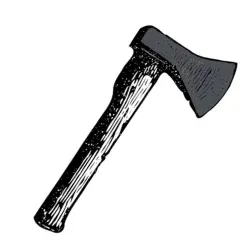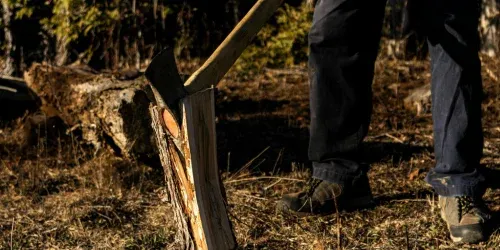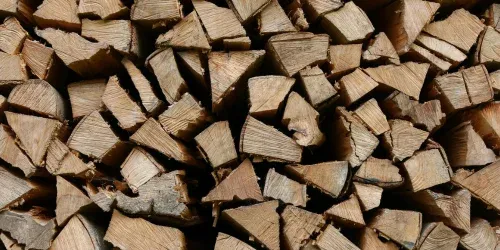When the time comes to chop wood, the weight of your axe can make a big difference in how effectively you can split logs. Is a heavier axe always better, or could a light axe do the job more efficiently? Let's dive into the pros and cons of each to help you decide which might be the best fit for your wood-chopping needs.
Key Takeaways:
- Choice Depends on Use: Whether a lighter or heavier axe is better depends largely on the specific task, such as chopping wood or splitting logs.
- Energy and Speed: Heavier axes deliver more energy but require more strength, while lighter axes offer speed and ease of control.
- Personal Comfort and Skill: The best axe also depends on personal preference, skill level, and physical capability.

Understanding Axe Basics: What You Need to Know
Before diving into whether a lighter or heavier axe is better, it's crucial to understand the basic components of an axe. The axe consists primarily of two parts: the handle and the axe head. The head weight plays a pivotal role in how the axe performs. Heavier heads, typically found in heavier axes, are designed to deliver more energy upon impact. On the other hand, lighter axes, with their reduced head weight, are easier to swing and handle.
Axes come in various shapes and sizes, each suited for different tasks. For instance, a splitting axe is specifically designed to split wood along the grain, making it different from a chopping axe used to cut wood across the grain. Understanding these distinctions is key to choosing the right tool for the job.
The Physics of Swinging an Axe: Kinetic Energy and Force
When you swing an axe, you're converting kinetic energy from your swing into force that splits or chops the wood. The amount of energy transferred is influenced by the axe's head weight. Heavier axes, with more mass, can transfer more energy but require more effort to swing. This can lead to quicker fatigue. Lighter axes, while requiring less energy to swing, might need more strikes to achieve the same effect as a heavier axe.
The speed of the swing also plays a crucial role. A faster swing with a lighter axe can sometimes compensate for the lighter head weight, making it as effective as a heavier axe in certain situations. This balance between weight, speed, and energy is crucial in determining the effectiveness of an axe for specific tasks.

Heavier Axes: Pros and Cons
Heavier axes are typically preferred for jobs that require splitting larger pieces of wood or logs where the additional weight helps drive the axe through tough fibers. The heavy head weight ensures that each strike delivers maximum force, reducing the number of hits needed to split the wood effectively. This can be particularly useful when dealing with hardwoods or larger logs.
However, the downside to heavy axes is the physical strain they can impose. Swinging a heavy axe all day can be exhausting and may not be suitable for everyone. The increased weight can also make it harder to control the axe, potentially leading to inaccuracies in strikes or even injury.
Lighter Axes: Pros and Cons
Axes with a light head weight shine in their ease of use and control. They are particularly suitable for chopping smaller pieces of wood, kindling, or when precision is needed. The ability to swing faster and with more control allows for a more accurate strike, which is crucial when aiming for specific spots on the wood.
Despite these advantages, lighter axes might fall short when it comes to splitting large logs or hardwoods. The lighter head weight means that it might take more strikes to effectively split wood, potentially increasing the overall effort and time required for the task.
Impact of Handle Material: Fiberglass vs. Wood
The material of the axe handle—commonly wood or fiberglass—also affects the tool's performance. Fiberglass handles are known for their durability and resistance to weather, making them a low-maintenance option. They also absorb some of the shocks during a strike, reducing fatigue over prolonged use.
Wood handles, while traditional and aesthetically pleasing, require more maintenance to keep them in good condition. They can absorb shocks well but are prone to cracking and breaking if not properly cared for. The choice between these materials can also influence the overall weight and balance of the axe, further affecting its suitability for different tasks.

Skill Level and Physical Strength: Finding Your Fit
Your personal skill level and physical strength are significant factors in choosing between a lighter or heavier axe. For individuals with less upper body strength or those new to wood chopping, a lighter axe might be more manageable and safer to use. It allows for longer periods of work without excessive fatigue.
Conversely, more experienced individuals or those with greater physical strength might prefer heavier axes, as they can effectively handle the additional weight and take advantage of the increased power to achieve more with each strike.
Environmental Considerations: Indoor vs. Outdoor Use
Where you plan to use the axe also influences the ideal weight. For indoor use, such as splitting wood for a fireplace, a lighter axe might be more practical. It offers enough force to split smaller logs and is easier to maneuver in confined spaces.
For outdoor tasks, such as felling trees or splitting large logs, a heavier axe might be more beneficial. The added weight helps in delivering powerful strikes that penetrate deeper, making the task more efficient.

Summary
Choosing between a lighter or heavier axe largely depends on the specific wood-splitting or chopping needs, personal preference, skill level, and physical capability. Heavier axes pack more power and are ideal for splitting large logs, while lighter axes offer speed, control, and are suitable for smaller tasks. Understanding the balance between these factors will help you select the best axe for your needs.

FAQs
Can I use a lighter axe for all my wood chopping needs?
While a lighter axe is versatile and easier to handle, it might not be suitable for all chopping needs, especially for splitting large or hardwood logs where a heavier axe would be more efficient.
How do I decide between a wood or fiberglass handle?
Consider the maintenance you're willing to perform, the weather conditions, and personal preference for shock absorption. Fiberglass handles are durable and low-maintenance, while wood handles offer traditional aesthetics and effective shock absorption.
Is it better to have multiple axes of different weights?
Yes, having axes of different weights can be beneficial as it allows you to choose the most appropriate tool based on the specific task at hand, enhancing both efficiency and safety.
Related articles:











